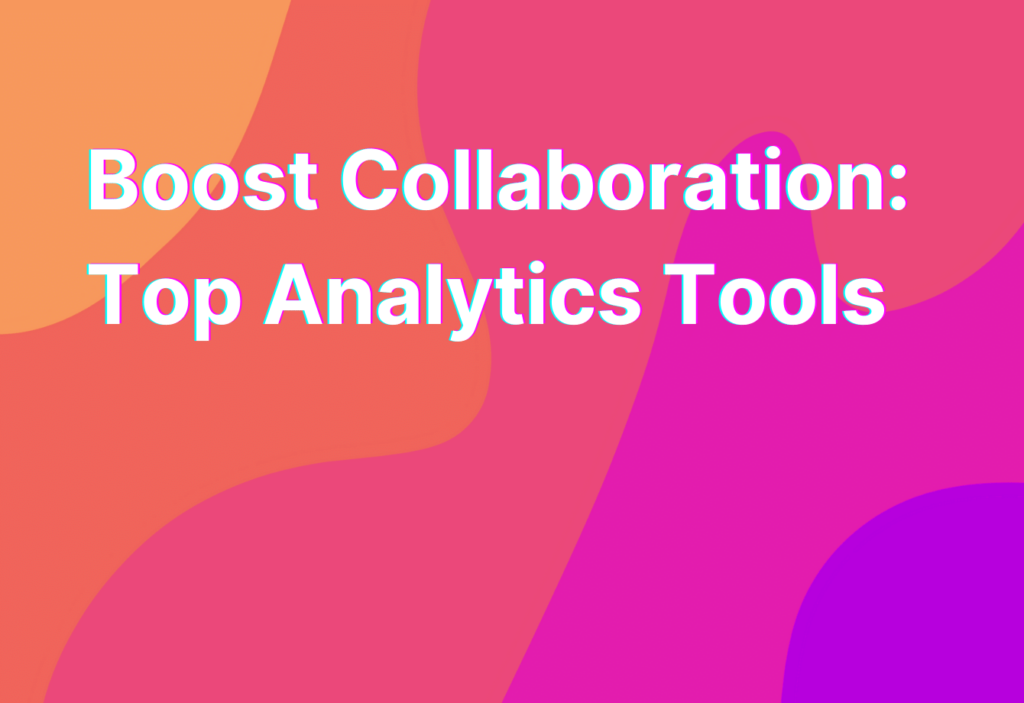Boost Collaboration: Top Analytics Tools
Hey there, remote work enthusiasts! Ashley here, your go-to gal for all things remote work. Today, I want to talk about a topic that is crucial for successful collaboration in remote teams: analytics. With the rise of remote work, it’s more important than ever to have the right tools in place to track and analyze team performance. So, let’s dive into the top analytics tools that can help boost collaboration in your remote team!
1. Google Analytics
When it comes to analytics, Google Analytics is a household name. While it’s primarily known for website analytics, it can also be a powerful tool for tracking team performance. With Google Analytics, you can measure key metrics like website traffic, user engagement, and conversion rates. By integrating Google Analytics into your remote team’s workflow, you can gain valuable insights into how your team is performing and identify areas for improvement.
Pro tip: Did you know that Google Analytics offers a real-time reporting feature? This means you can see how your team is performing in real-time, allowing you to make data-driven decisions on the fly. Pretty cool, right?
2. Trello
Trello is a popular project management tool that can also provide valuable analytics for your remote team. With Trello’s built-in analytics features, you can track things like team productivity, task completion rates, and project timelines. By visualizing your team’s progress and performance, Trello can help you identify bottlenecks, allocate resources more effectively, and keep everyone on track.
Pro tip: Trello also integrates with other analytics tools like Google Analytics and Power BI, allowing you to consolidate your data and get a comprehensive view of your team’s performance.
3. Slack
Slack is a communication tool that many remote teams rely on for day-to-day collaboration. But did you know that Slack also offers analytics features? With Slack’s analytics, you can track things like message volume, response times, and user engagement. This can be especially useful for identifying communication patterns, improving team communication, and ensuring that everyone is on the same page.
Pro tip: Slack’s analytics can also help you identify your team’s most active members, giving you insights into who is driving collaboration and who may need a little extra support.
4. Zoom
In the age of remote work, video conferencing has become the norm. And when it comes to video conferencing, Zoom is the go-to choice for many remote teams. But Zoom isn’t just a video conferencing tool – it also offers analytics features that can help you track meeting attendance, participant engagement, and meeting duration. By analyzing this data, you can optimize your team’s meeting schedule, improve meeting efficiency, and ensure that everyone is getting the most out of their virtual meetings.
Pro tip: Zoom’s analytics can also help you identify any technical issues that may be affecting your team’s meeting experience, allowing you to troubleshoot and resolve them quickly.
5. Monday.com
Monday.com is a popular project management and collaboration tool that offers robust analytics features. With Monday.com’s analytics, you can track things like task progress, team workload, and project timelines. By visualizing your team’s data, you can easily identify areas where your team may be falling behind, allocate resources more effectively, and ensure that projects stay on track.
Pro tip: Monday.com’s analytics can also help you identify any dependencies or bottlenecks in your team’s workflow, allowing you to make adjustments and keep things running smoothly.
Wrapping Up
And there you have it – the top analytics tools to boost collaboration in your remote team. From Google Analytics to Trello, Slack to Zoom, and Monday.com, these tools offer valuable insights into your team’s performance, helping you make data-driven decisions and improve collaboration. So, why not give them a try and see how they can take your remote team to the next level?
Before I sign off, I want to leave you with one more resource that can help streamline collaboration in your remote team. Check out this API integration guide on Remote Teamer’s website. It’s packed with tips and tricks on how to integrate different tools and systems to create a seamless collaboration experience. Trust me, you don’t want to miss it!
Until next time, happy collaborating!


